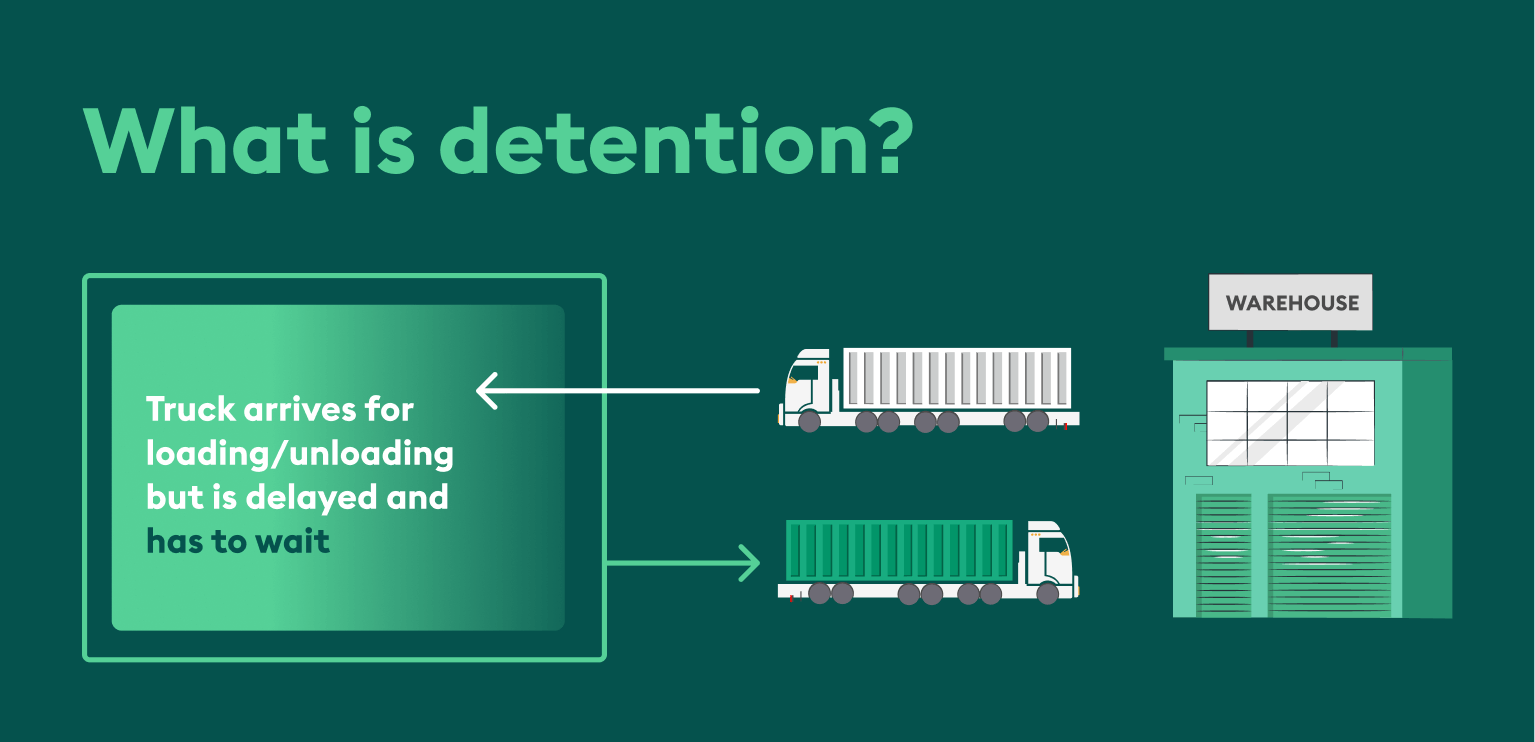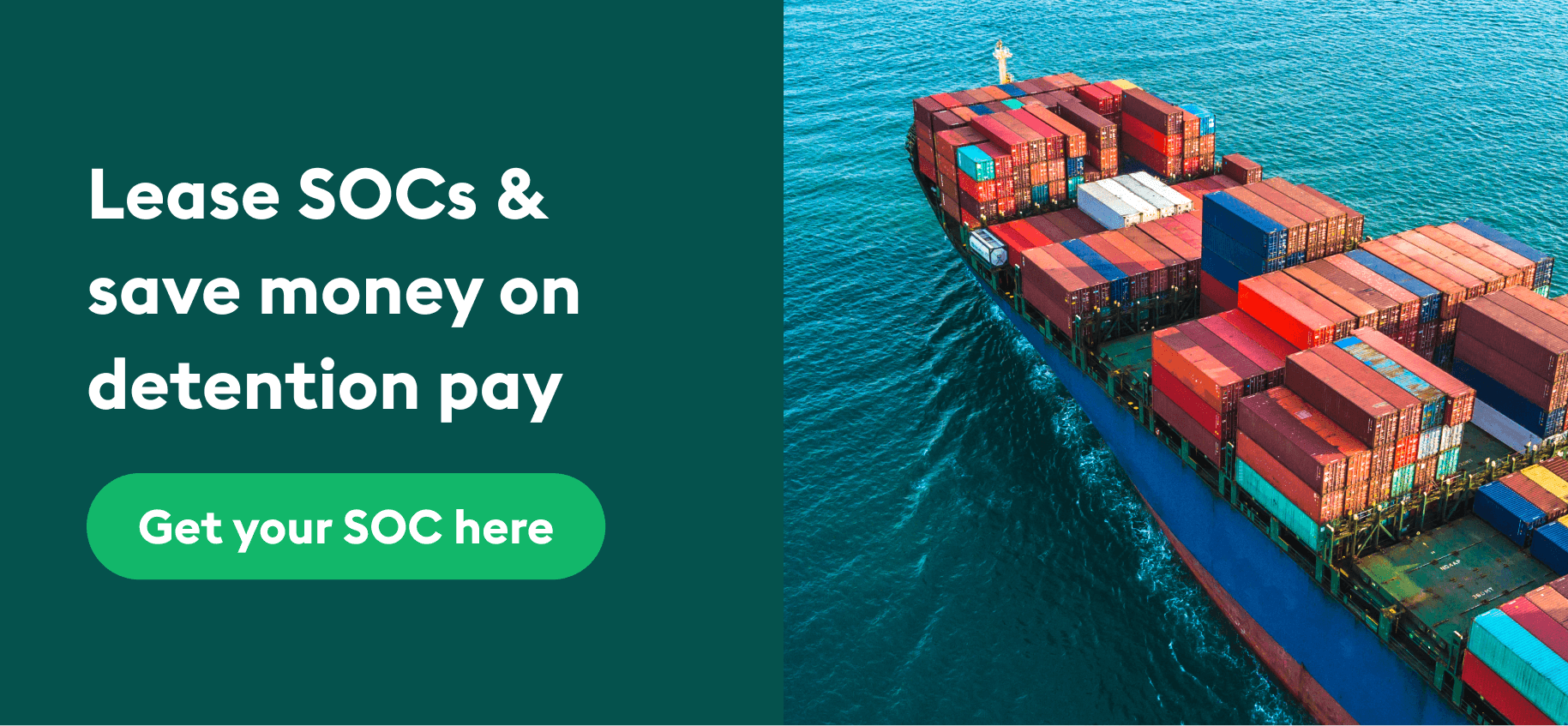Detention pay is an expensive fee that eats into a company’s budget. In this blog, we’ll take you through how you can avoid these fees to help you save a few dollars.
Detention pay is charged to incentivize shippers and consignees to prioritize efficient loading and unloading practices. And no one in the industry is a fan of these fees. These delay charges are frustrating, and costly, and hamper your time and productivity. This usually results in lost wages and major hits to your company’s budget. So, you need to find a way to avoid these pesky charges.
You can, in fact, steer clear of detention pay altogether. The secret is by using SOC containers. Though it might not always be easy to get these boxes through your usual sourcing channels, but at Container xChange, we make that possible for you.
Use our public search below to connect and negotiate deals on SOC containers from vetted members with ease. All you have to do is choose, “I want to use containers”, select a drop-off and pick-up location, and hit search! You’ll then get to choose from a list of SOC units, certified suppliers, and competitive rates.
What is detention pay?
Detention pay is a penalty charged to the shipper when their loading or unloading causes delays and makes the trucker wait at the facility. Most shippers and consignees are allowed a 2-hour time period to load/unload their cargo, surpassing this free-time results in detention pay charges.
Imagine after driving for hours, the truck driver finally arrives at the pick-up facility only to be told that the shipment isn’t ready yet. Now he is forced to wait. He loses out on valuable driving time.
If a truck driver isn’t on the move, he isn’t earning money. The longer the delay, the greater the loss of income. Besides the fact that detention pay cuts driver’s profits, it’s frustrating to have to wait for hours in one place.
If you, the shipper, have a detention pay policy in place, you’ll pay a detention fee for every hour that the truck driver is made to wait. This is to ensure that truckers don’t lose any money as a result of the delay.

However, at times, things may not go as planned for several reasons causing such delays. Thus, it’s always good to be aware of what could affect your shipment at the planning stage itself and keep yourself prepared. Here are some factors that may cause detention delays:
What causes detention delays?
Detention delays can be caused by a variety of factors. Here are 6 common reasons for detention delays:
- Inefficient loading/unloading practices
- Delays in production
- Poor infrastructure
- Truck breakdowns or mechanical issues
- Traffic congestion
- Unexpected weather conditions
Whatever the cause may be, detention delays can be extremely frustrating and costly for both the shipper and the trucker.
Some would call this ‘the snowball effect’. One thing leads to another and the next thing you know, you’re facing unexpected charges.
Who pays detention charges?
Now that you know what detention pay is and why it happens, you’ll want to know who charges what. And it’s simple.
The shipping line charges detention pay to the shipper, and the truck driver is then paid whatever the amount is to compensate for the loss of income.
How to determine detention pay?
To determine your detention rate, you must first determine your operational costs. Your operational cost includes all expenses associated with running your business, such as repairs, licensing, payroll, and more.
To continue to calculate what your detention rate should be based on your operational costs, break it down a little further and get your operational cost per hour. From here, you’ll have a far better sense of how much detention costs after free time, allowing you to negotiate a price during that time.
Although this is something you’d preferably like to avoid as much as possible. Here are three ways you can do it.
4 ways to avoid detention pay
If you’re being charged for things like detention or demurrage, you’ll want to know how best to avoid charges like these. You can avoid detention pay charges by:
- Knowing your leasing contract – Be aware of what your leasing contract says about time allocation so that you’re able to make necessary arrangements. It helps if you have a good relationship with your carrier so you can negotiate more free time.
- Planning ahead – It’s always beneficial to plan ahead, especially in this industry. Be sure of arrival times for each shipment so that you can plan with the staff involved in offloading cargo.
- Pre-clearing your cargo – Try to clear your shipments as early and as quickly as possible so that you’re able to schedule drayage and trucking services in advance.
- Using SOC containers- SOC or shipper-owned containers, are boxes that are owned by a shipper. So, with an SOC, you arrange for your own container instead of using a shipping line’s equipment. This way you have your own box and just have to pay the carrier for the available space on the ship.
- Additionally, by using SOC container you save a lot of money on demurrage and detention as your daily rental fees do not depend on the duration of the rental. They stay the same price per day. Also, with SOCs, you’re under no obligation to pay demurrage and detention charges to carriers. So, you avoid unexpected demurrage and detention costs as you are not obligated to move and/or return the containers to and from the carrier within a certain time frame.
Want to save up on detention pay fees? Secure SOC containers on Container xChange today. Choose from 50,000+ SOC container types in 2,500+ locations worldwide from 1,500+ vetted suppliers just by clicking the banner below.
Detention pay in trucking
Now that you’ve got your SOC let’s take a diversion into detention pay in trucking since these charges are something that almost all truckers experience at some point.
Detention pay helps supplement a driver’s earnings when they’re stuck at a port or at both the loading and unloading destination. However, it doesn’t always make up for what they would’ve earned by delivering on schedule.
This puts trucking companies at a loss. Industry giants are continuously looking at ways to eradicate detention, though this might not be easy, it can be managed and minimized by putting the focus on things you can control. Things such as poor infrastructure and lack of proper planning in the logistics process.
Another way to manage detention pay for truckers is by using ELD or electronic logging devices. It’s a hardware device that is used to track driving time for commercial vehicles.
With ELD, drivers can mark the time as “on duty, not driving”. They record their location by snapping one screenshot of the ELD when stationary at the location and a second screenshot of the ELD before leaving the location. When the driver pulls out, they update their status to driving, which shows the time they leave the loading dock. With an ELD, truckers are fairly compensated for the time they’ve been in detention.
ELDs can facilitate communication between drivers and shippers, allowing for more efficient and effective coordination of deliveries and pick ups. This regulates container flow and can help shippers comply with federal regulations on driving hours and rest periods, which can help prevent conflict and strengthen relationships with drivers.
Demurrage and detention: What’s the difference?
Another very similar term used that you must’ve come across is demurrage. Often shippers, carriers, and forwarders mistake demurrage and detention (D&D) to be the same thing but they are very different. Let’s quickly differentiate the two for you:
| Detention | Demurrage |
| Refers to charges that apply for the usage of containers outside the port terminal | Refers to charges that apply for usage of container equipment within the port terminal. |
| Charged by the shipping line per container, per diem. | Charged by the port authorities per container, per diem. |
| The amount varies per location and container type. | The amount charged varies per location and equipment type |
Each year, Container xChange releases a benchmark report that looks at these charges with a fine-tooth comb, analyzing how they change year on year and comparing these fees across carriers, regions, and ports. Interested in reading our free paper? Click on the banner below.
As you know, SOCs can help you avoid demurrage and detention charges. So, secure your box on Container xChange from big players in the industry like SeaCo, Trident, SeaCube, and other trusted names.
Save on detention pay by leasing SOCs one-way
On Container xChange, you can find SOC containers for one-way moves to avoid empty container repositioning too. You lease your SOC for one journey and then deliver them back to your partner’s depot at the destination port. This way you get your cargo moved, and get the box where you need it. You only pay the pick-up fees; you don’t even have to pay per diem charges. That’s because most container owners are only interested in a quick turnaround. They, in fact, want you to just reposition their equipment. In that way, they can get the boxes moved from a surplus area to a deficit area, hence eradicating empty container repositioning.
Plus, once you have moved your cargo, you can sell the container again on our platform at a good price and help in repositioning them. Know how you can sell a box at a good price and help in repositioning right here.
More than 1,500+ companies such as Seaco Global, Kuehne + Nagel, and Trident are already using our neutral platform and making the best use of SOC containers. Join them and save up on detention pay as well as help curb empty container repositioning.
|
Here’s what one of our members, Neptune Logistics has to say, “We found a way around China’s one-way container shortage with xChange. Since joining in 2019, we’ve made 39+ reliable partners overseas and have successfully repositioned 1000s of our empty containers. And we’ve simplified our container operations while doing so! No more back-and-forth emails and cold calling.” |
Just like our customer here, you too can lease SOCs at inexpensive, competitive, comparable, and negotiable rates (thanks to our full market price transparency) to avoid detention fees and empty repositioning. So go ahead and find top deals on SOCs, and simplify your container logistics operations today by clicking on the banner below.
Detention pay: Common FAQs
Do carriers charge detention pay?
Detention pay is charged by carriers and shipping lines to compensate for lost time and protect their assets. Delays can cause drivers to miss scheduled delivery and run out of legal driving time.
How long does a receiver have to unload a truck?
Most shippers and receivers have a 2 hour window to load and unload a truck. Some companies offer extra time, however, they may charge an hourly rate once that time has passed.
How does detention pay work?
Drivers are allocated a specific amount of time to load/unload cargo. If there are delays and the driver gets stuck at the port, a detention fee is charged in order to compensate drivers for lost time on the road.





